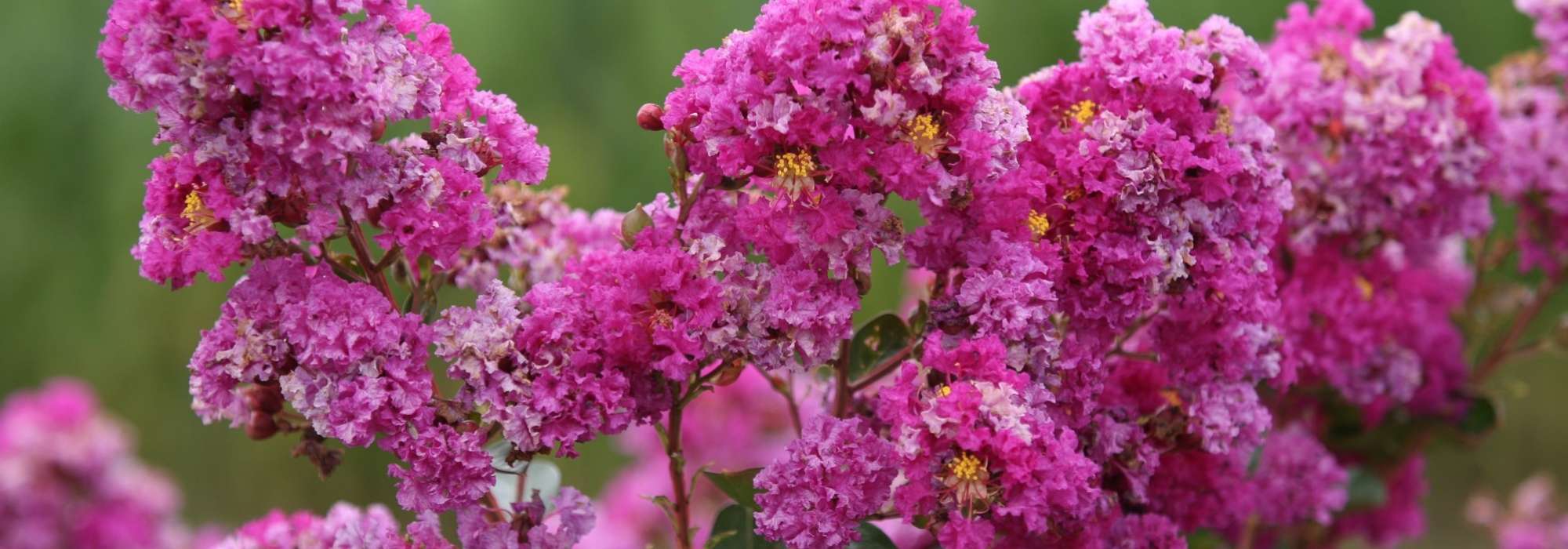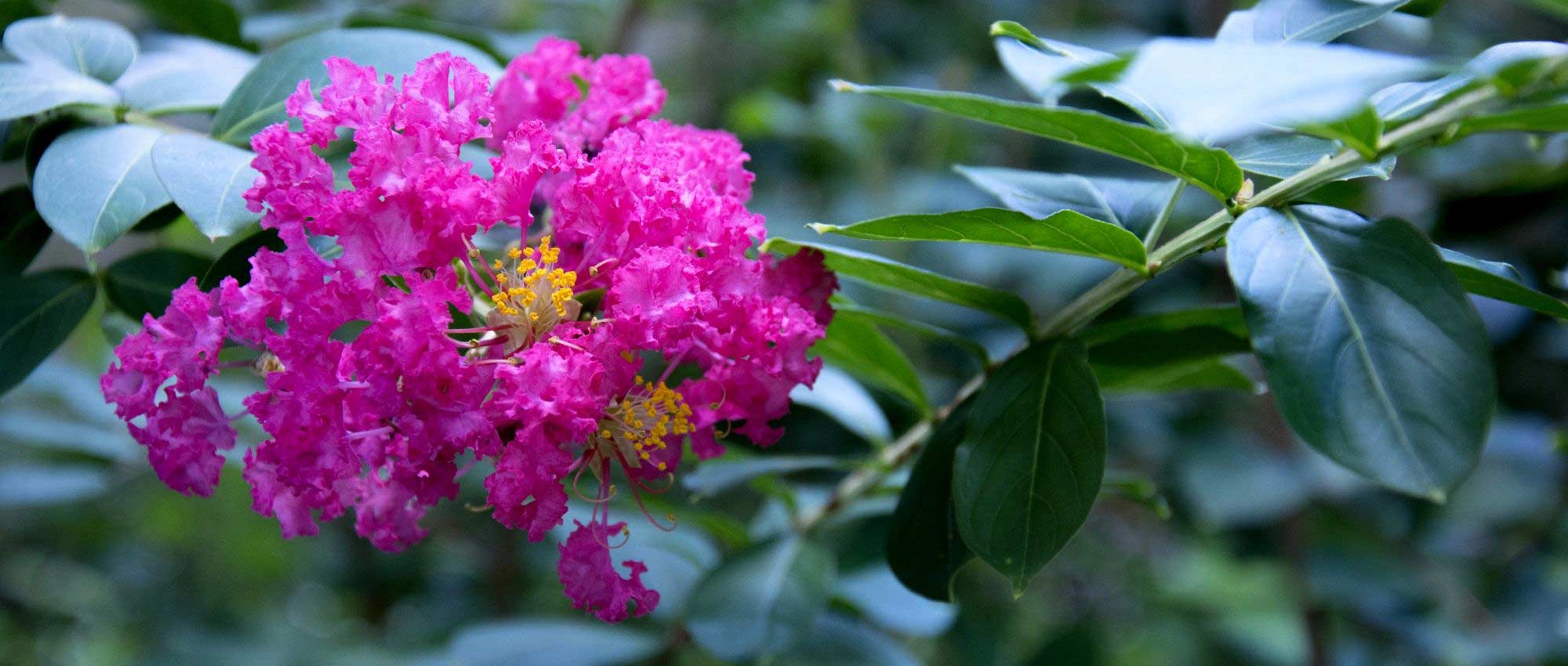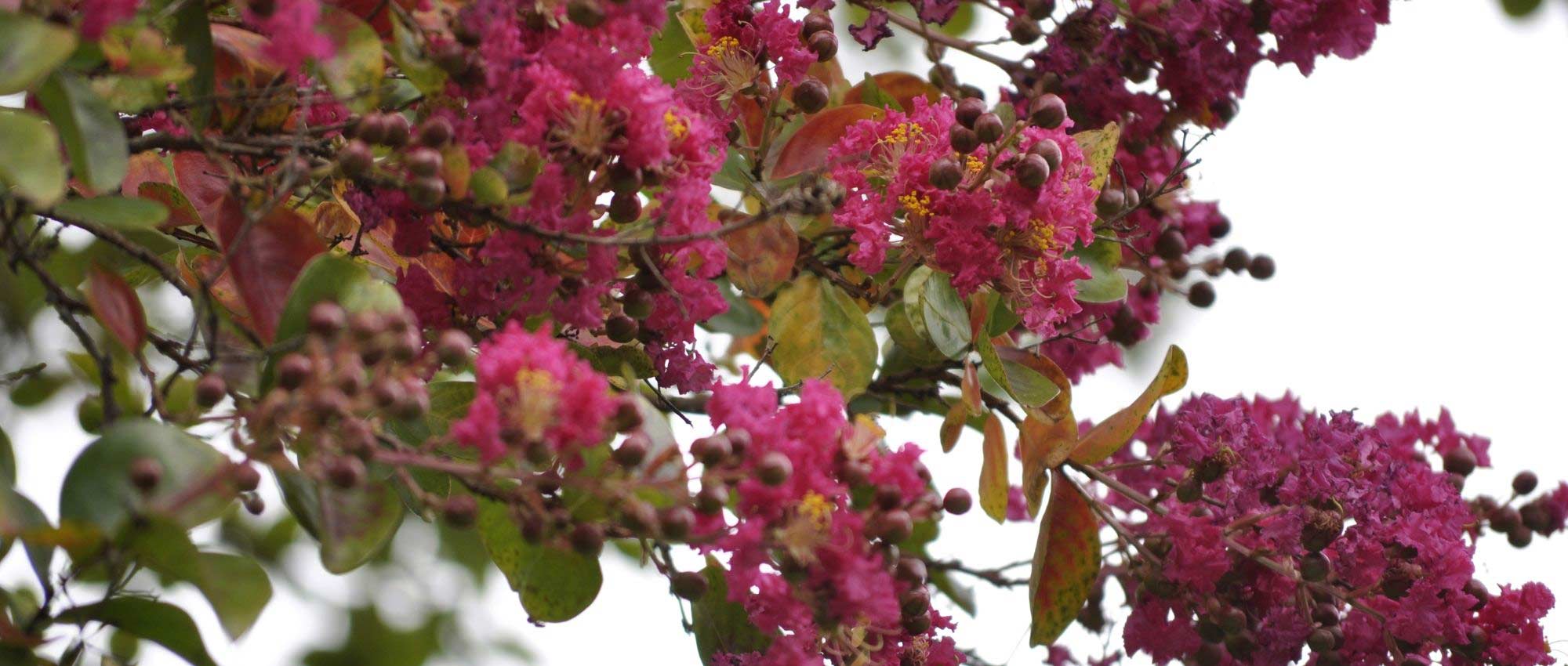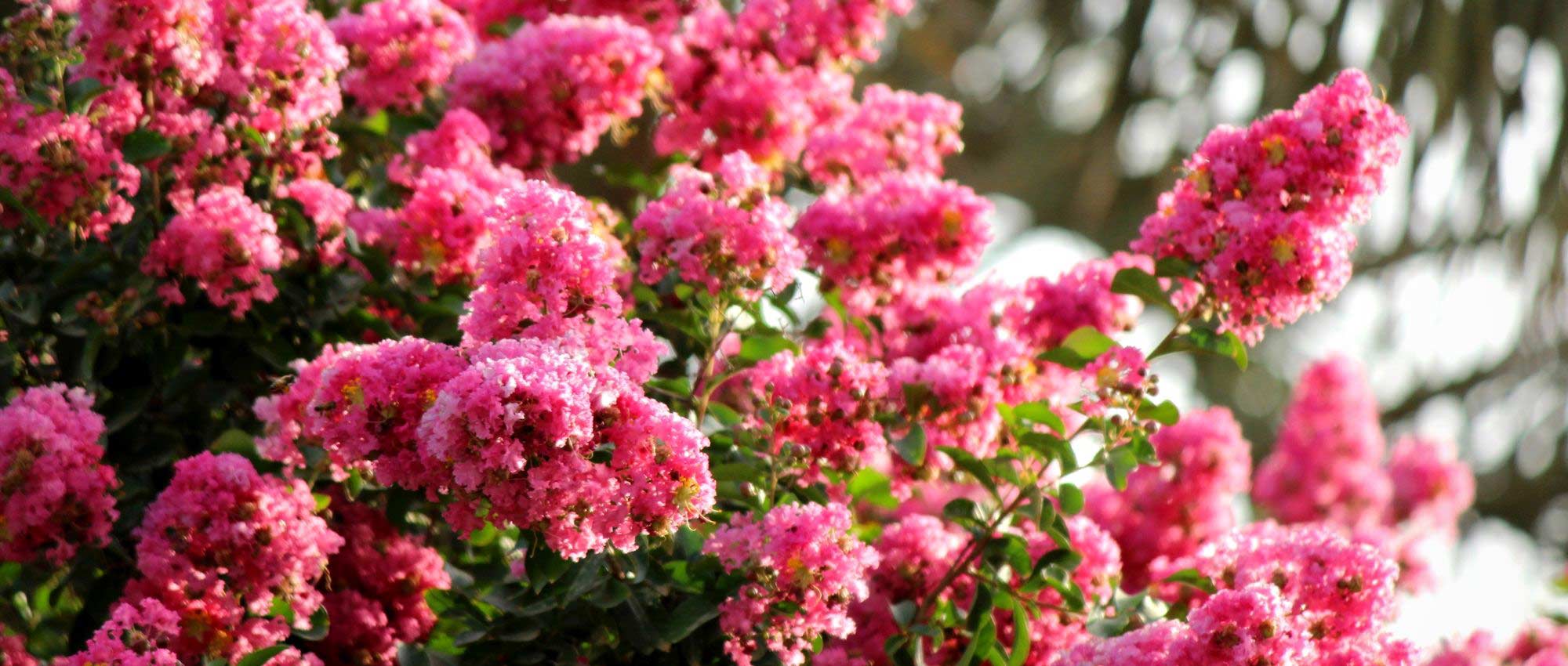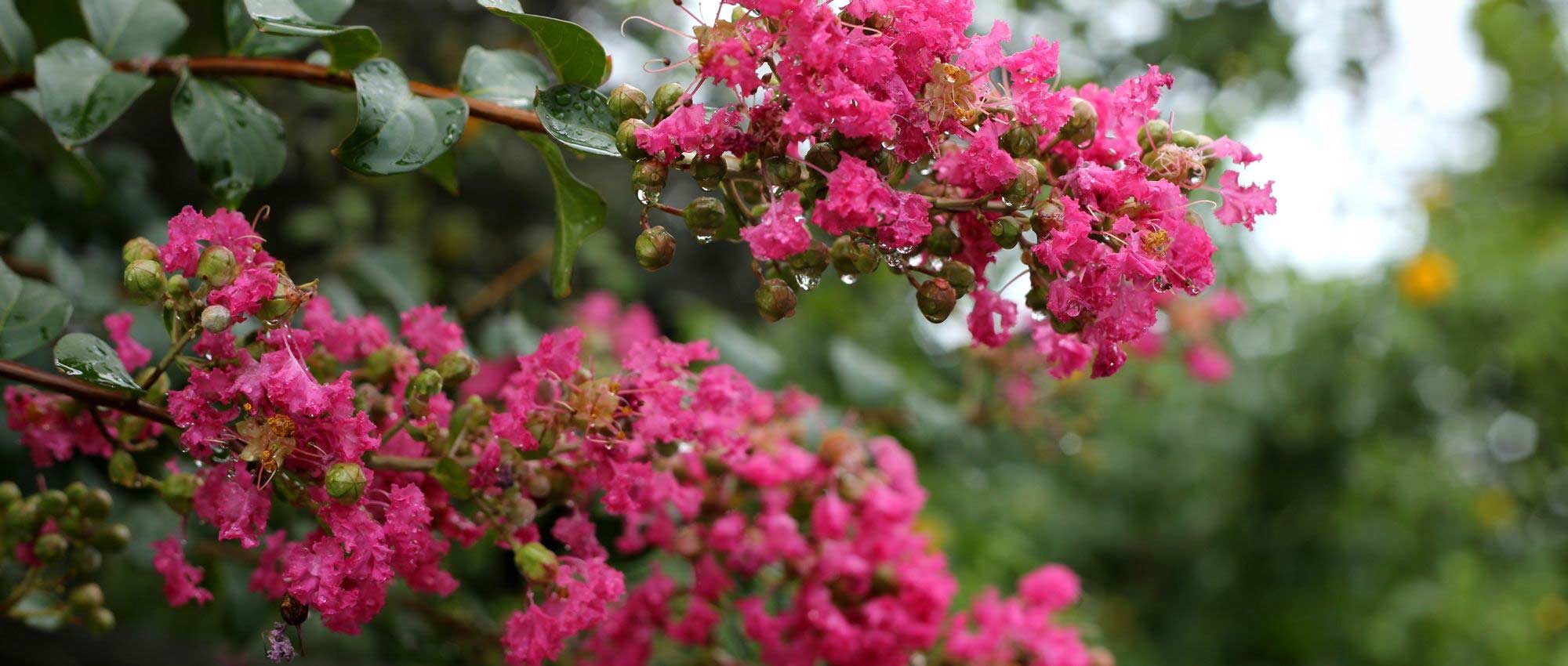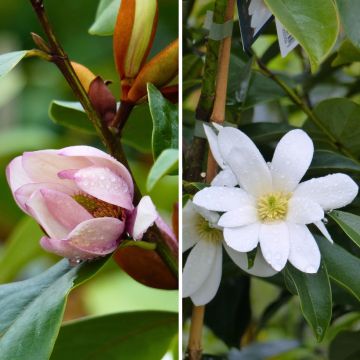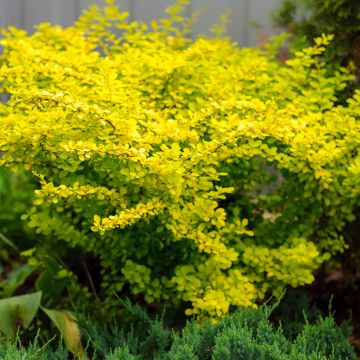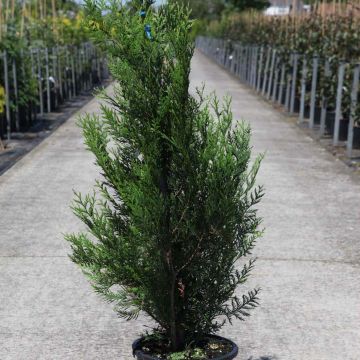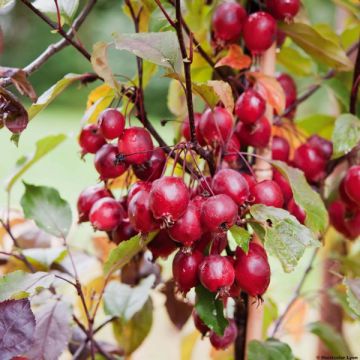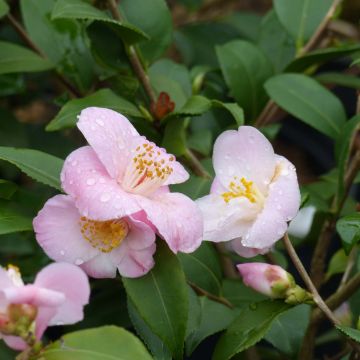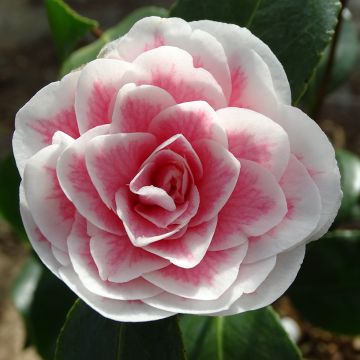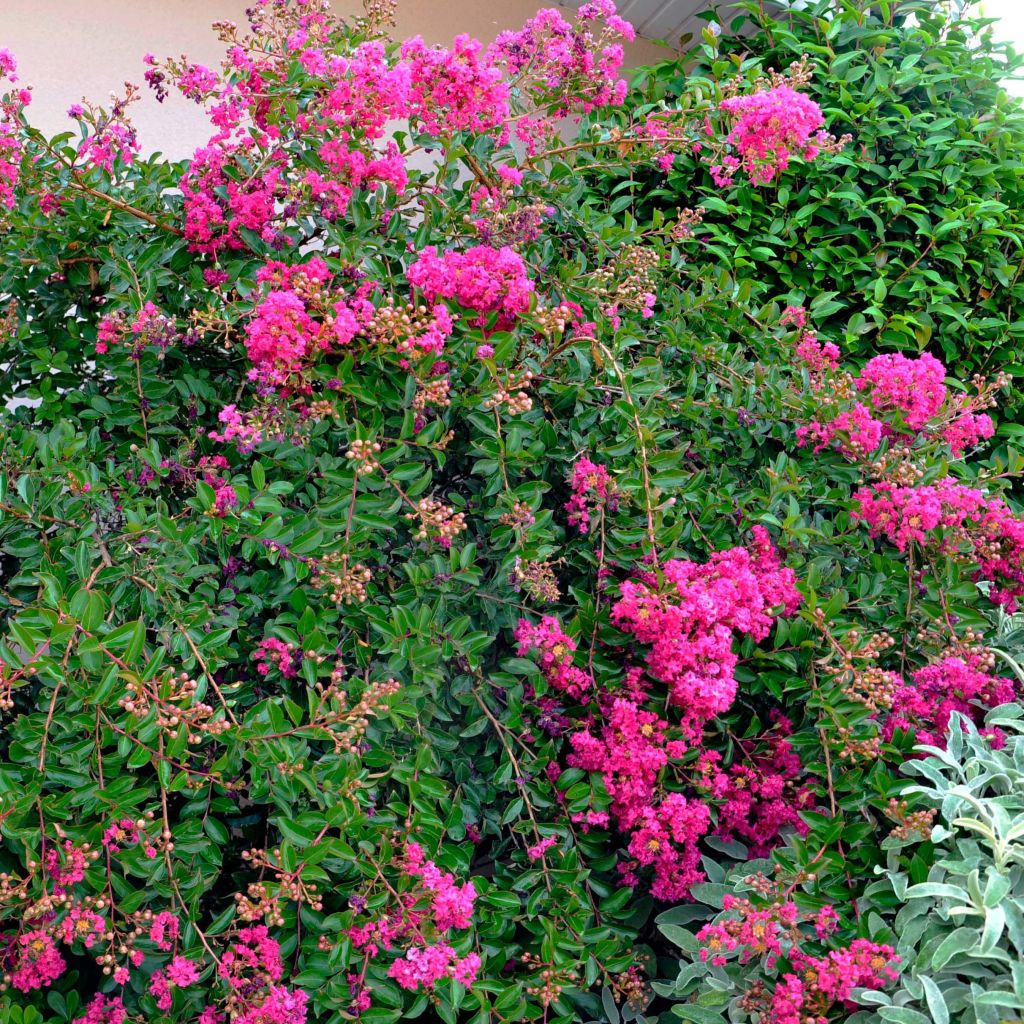

Lagerstroemia indica Mimie Fuchsia - Crape Myrtle
Lagerstroemia indica Mimie Fuchsia - Crape Myrtle
Lagerstroemia indica Dablage01 (MIMIE® FUCHSIA)
Crape Myrtle, Crepe Myrtle, Indian Lilac
Delivery was in accordance with excellent packaging, no soil everywhere in the box.
Catherine, 08/02/2022
Special offer!
Receive a €20 voucher for any order over €90 (excluding delivery costs, credit notes, and plastic-free options)!
1- Add your favorite plants to your cart.
2- Once you have reached €90, confirm your order (you can even choose the delivery date!).
3- As soon as your order is shipped, you will receive an email containing your voucher code, valid for 3 months (90 days).
Your voucher is unique and can only be used once, for any order with a minimum value of €20, excluding delivery costs.
Can be combined with other current offers, non-divisible and non-refundable.
Home or relay delivery (depending on size and destination)
Schedule delivery date,
and select date in basket
This plant carries a 24 months recovery warranty
More information
We guarantee the quality of our plants for a full growing cycle, and will replace at our expense any plant that fails to recover under normal climatic and planting conditions.

Would this plant suit my garden?
Set up your Plantfit profile →
Description
The Lagerstroemia indica 'Mimie Fuchsia' is a brand new variety of Indian Lilac that caused a sensation at the Salon du Végétal in 2017, and for good reason. This variety naturally has a very spread out slightly trailing growth, small growth, but rapid flowering from a young age, and a flowering period that is as early and generous as it is brightly coloured in vibrant fuchsia pink. This adorable bush is also resistant to powdery mildew and easy to grow in sunny, well-drained soil. Highly versatile and attractive all year round, with successive waves of flowering throughout summer, it will make a superb ground cover, a wide dome with slightly blurred shapes, or an astonishing feature for the terrace if trained as a standard. Adopt 'Mimie Fuchsia', and you'll receive compliments from everyone!
The Lagerstroemia indica 'Mimie Fuchsia' belongs to the Lythraceae family. It is a new French variety that is hardy enough to be planted in most of our regions. The Lagerstroemia indica, from which it originates, is native to China. This bush has a spreading, wide habit, supported by more or less horizontal branches that slightly trail. It naturally forms a large ground cover with a height of 1m (3ft) and a spread of 2.50m (8ft). Its lower trunk can also be cleared to train it as a standard with a height of 1m (3ft), creating a lovely small weeping bush. It has a fairly rapid growth. It chooses the month of June to start flowering, which continues in successive waves until October, even on young plants. The flowers are characterized by thin pedicels, each carrying five undulate-edged petals. The flowers, whose texture resembles that of crepe fabric, are clustered in large, dense panicles, measuring up to 30cm (12in) in length, at the ends of the branches. In 'Mimie Fuchsia', the flowers are a very bright fuchsia pink. The foliage, tough and glossy, emerges red and then turns dark green in summer. It consists of small oval leaves, which sometimes take on pretty yellow or red hues in autumn, depending on the climate. This deciduous foliage falls late in autumn, revealing a slightly twisted branching structure that is quite charming. Lastly, and to finish in style, its bark is interesting, smooth, grey-brown, peeling off in pink patches.
The Indian Lilac, which is renowned in the gardens of the South-West, deserves to be acclimatized in the colder areas of our country, by carefully choosing the variety and its location. 'Mimie Fuchsia's' hardiness, once well established, allows it to be grown in all our temperate regions, even in the North. It looks best when planted alone, near the house, and positioned higher up above a low wall, for example, so that you can fully enjoy its unique personality. It also looks great in front of a shrub border or in a large pot on the terrace, trained as a standard. Create a border like a bouquet, with Campanula pyramidalis, Salvia sclarea, Aster laevis, and many more. In autumn, it pairs well with asters and caryopteris, which are just as colourful as it is.
NB: Carl Linnaeus named this tree in honour of his friend Magnus Von Lagestroem (1696 – 1759), who had sent it to him from India for identification. Originally, this tree was used to decorate Chinese temples. We would like to point out that this tree produces fruits with a narcotic effect if ingested.
Lagerstroemia indica Mimie Fuchsia - Crape Myrtle in pictures
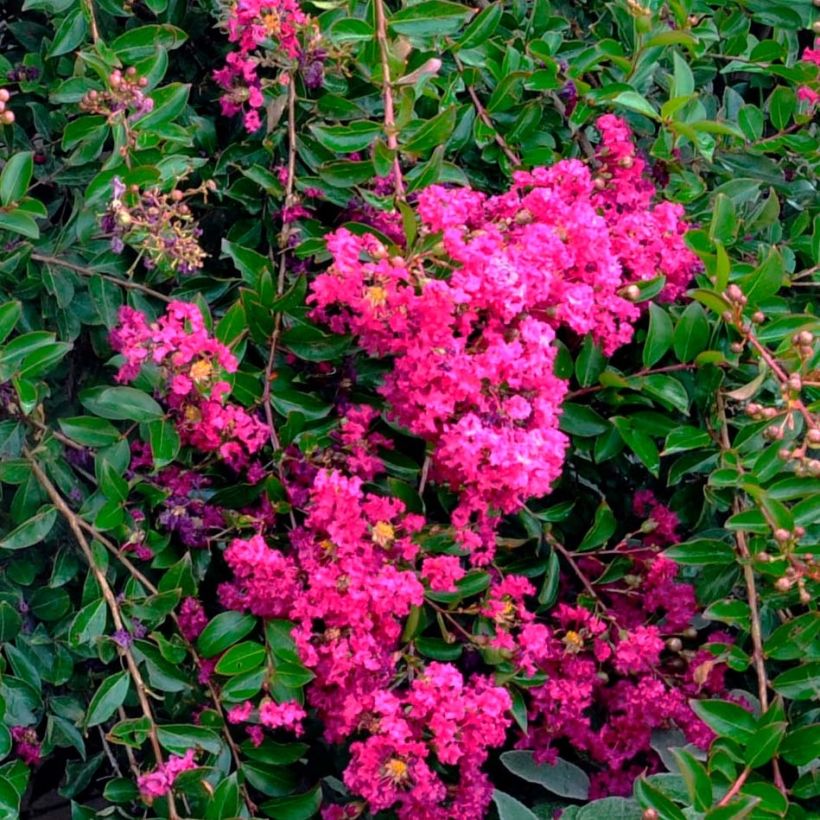

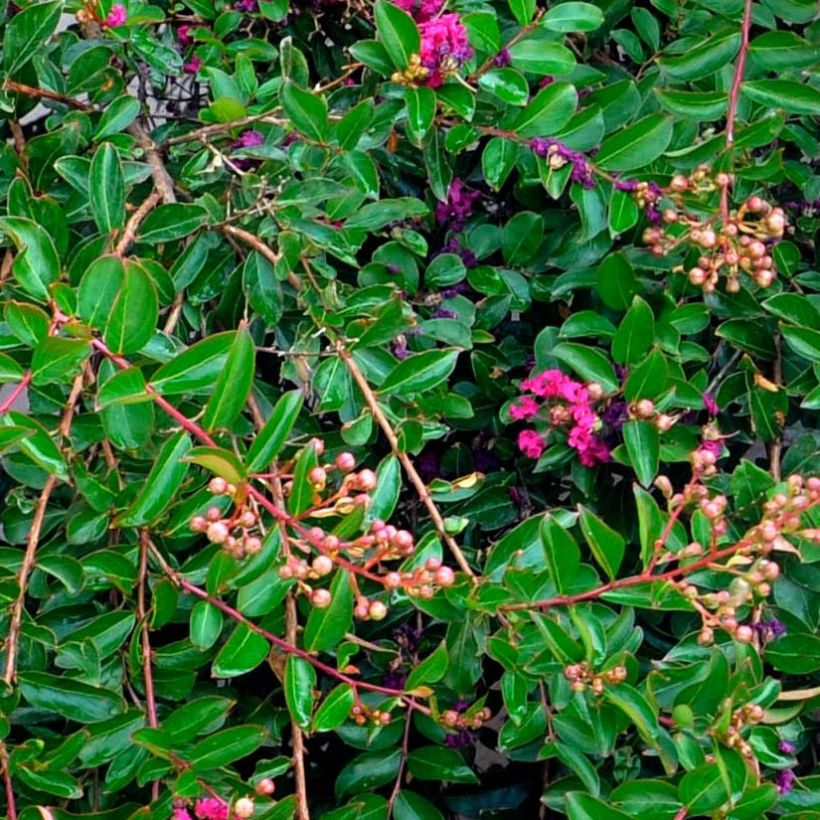

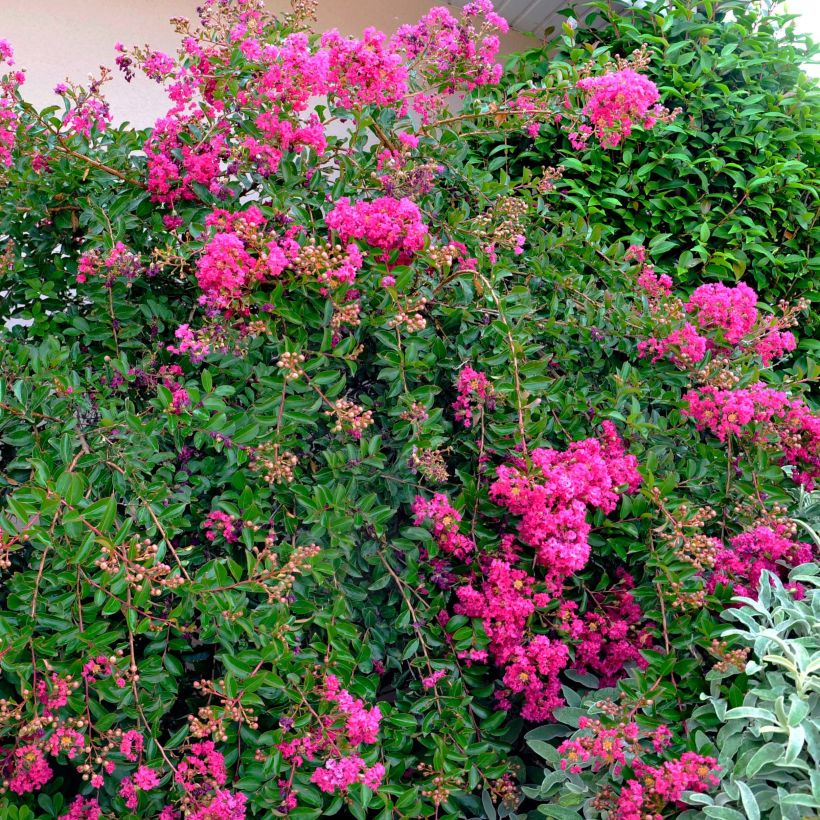

Plant habit
Flowering
Foliage
Botanical data
Lagerstroemia
indica
Dablage01 (MIMIE® FUCHSIA)
Lythraceae
Crape Myrtle, Crepe Myrtle, Indian Lilac
Cultivar or hybrid
Planting and care
We advise you to plant the Lagestroemia indica 'Mimie Fuchsia' in spring, when the risk of frost is no longer a concern, in a very sunny and sheltered location, in a rich, moist, well-drained soil, preferably non- or slightly chalky. It will appreciate a compost addition and a thick layer of dead leaves, especially during the first two or three winters in cold regions. It is recommended to prune the flowering branches in February-March, leaving only 4 to 6 buds to balance its habit and stimulate the growth of future flower-bearing branches. If necessary, remove weak twigs and poorly positioned branches. This Indian lilac is not very susceptible to diseases and pests.
Planting period
Intended location
Care
Planting & care advice
-
, onOrder confirmed
Reply from on Promesse de fleurs
Similar products
Haven't found what you were looking for?
Hardiness is the lowest winter temperature a plant can endure without suffering serious damage or even dying. However, hardiness is affected by location (a sheltered area, such as a patio), protection (winter cover) and soil type (hardiness is improved by well-drained soil).

Photo Sharing Terms & Conditions
In order to encourage gardeners to interact and share their experiences, Promesse de fleurs offers various media enabling content to be uploaded onto its Site - in particular via the ‘Photo sharing’ module.
The User agrees to refrain from:
- Posting any content that is illegal, prejudicial, insulting, racist, inciteful to hatred, revisionist, contrary to public decency, that infringes on privacy or on the privacy rights of third parties, in particular the publicity rights of persons and goods, intellectual property rights, or the right to privacy.
- Submitting content on behalf of a third party;
- Impersonate the identity of a third party and/or publish any personal information about a third party;
In general, the User undertakes to refrain from any unethical behaviour.
All Content (in particular text, comments, files, images, photos, videos, creative works, etc.), which may be subject to property or intellectual property rights, image or other private rights, shall remain the property of the User, subject to the limited rights granted by the terms of the licence granted by Promesse de fleurs as stated below. Users are at liberty to publish or not to publish such Content on the Site, notably via the ‘Photo Sharing’ facility, and accept that this Content shall be made public and freely accessible, notably on the Internet.
Users further acknowledge, undertake to have ,and guarantee that they hold all necessary rights and permissions to publish such material on the Site, in particular with regard to the legislation in force pertaining to any privacy, property, intellectual property, image, or contractual rights, or rights of any other nature. By publishing such Content on the Site, Users acknowledge accepting full liability as publishers of the Content within the meaning of the law, and grant Promesse de fleurs, free of charge, an inclusive, worldwide licence for the said Content for the entire duration of its publication, including all reproduction, representation, up/downloading, displaying, performing, transmission, and storage rights.
Users also grant permission for their name to be linked to the Content and accept that this link may not always be made available.
By engaging in posting material, Users consent to their Content becoming automatically accessible on the Internet, in particular on other sites and/or blogs and/or web pages of the Promesse de fleurs site, including in particular social pages and the Promesse de fleurs catalogue.
Users may secure the removal of entrusted content free of charge by issuing a simple request via our contact form.
The flowering period indicated on our website applies to countries and regions located in USDA zone 8 (France, the United Kingdom, Ireland, the Netherlands, etc.)
It will vary according to where you live:
- In zones 9 to 10 (Italy, Spain, Greece, etc.), flowering will occur about 2 to 4 weeks earlier.
- In zones 6 to 7 (Germany, Poland, Slovenia, and lower mountainous regions), flowering will be delayed by 2 to 3 weeks.
- In zone 5 (Central Europe, Scandinavia), blooming will be delayed by 3 to 5 weeks.
In temperate climates, pruning of spring-flowering shrubs (forsythia, spireas, etc.) should be done just after flowering.
Pruning of summer-flowering shrubs (Indian Lilac, Perovskia, etc.) can be done in winter or spring.
In cold regions as well as with frost-sensitive plants, avoid pruning too early when severe frosts may still occur.
The planting period indicated on our website applies to countries and regions located in USDA zone 8 (France, United Kingdom, Ireland, Netherlands).
It will vary according to where you live:
- In Mediterranean zones (Marseille, Madrid, Milan, etc.), autumn and winter are the best planting periods.
- In continental zones (Strasbourg, Munich, Vienna, etc.), delay planting by 2 to 3 weeks in spring and bring it forward by 2 to 4 weeks in autumn.
- In mountainous regions (the Alps, Pyrenees, Carpathians, etc.), it is best to plant in late spring (May-June) or late summer (August-September).
The harvesting period indicated on our website applies to countries and regions in USDA zone 8 (France, England, Ireland, the Netherlands).
In colder areas (Scandinavia, Poland, Austria...) fruit and vegetable harvests are likely to be delayed by 3-4 weeks.
In warmer areas (Italy, Spain, Greece, etc.), harvesting will probably take place earlier, depending on weather conditions.
The sowing periods indicated on our website apply to countries and regions within USDA Zone 8 (France, UK, Ireland, Netherlands).
In colder areas (Scandinavia, Poland, Austria...), delay any outdoor sowing by 3-4 weeks, or sow under glass.
In warmer climes (Italy, Spain, Greece, etc.), bring outdoor sowing forward by a few weeks.






























